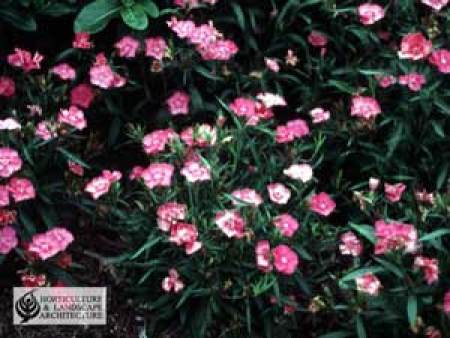
| Botanical Name: | Dianthus |
| Life Cycle: | annuals, biennials, perennials |
| Planting Time: | spring or summer |
| Height: | 6" to 24" |
| Exposure: | full sun (afternoon shade in warmest climates) |
| Soil: | dry to evenly moist, well-drained soil with a neutral to alkaline pH |
| Hardiness: | depends on variety |
| Bloom Time: | spring to early summer |
| Flower: | pink, rose, red, maroon, white and bi-colors |
| Foliage: | green |
| Propagation: | seeds, self-sowing |
| Suggested Use: | beds, borders, and edging; pathways, rock gardens, containers and flower boxes |
| Growing Hints: | Buy plants or sow seeds outdoors in mid-spring, barely covering them with soil (1/4"). Space plants about 6 inches apart when seedlings reach 1 to 2 inches in height. To encourage continuous blooming, deadhead spent flowers and cut back entire plants that have stopped flowering by 2/3 to re-invigorate. If you want to encourage self-sowing, let spent flowers and fading foliage remain in garden for several weeks. Dianthuses are drought tolerant and are easily "killed with kindness" by over-watering and over-mulching. |
| Interesting Facts: | Dianthuses are also known as "pinks" because the ragged appearance of their petals gives the impression they have been trimmed with pinking shears. Members of the carnation family, several varieties are quite fragrant, like the mat-forming cheddar pinks (D. gratianopolitanus). |

About The Author: Ellen Brown is an environmental writer and photographer and the owner of Sustainable Media, an environmental media company that specializes in helping businesses and organizations promote eco-friendly products and services. Contact her on the web at http://www.sustainable-media.com
Add your voice! Click below to comment. ThriftyFun is powered by your wisdom!